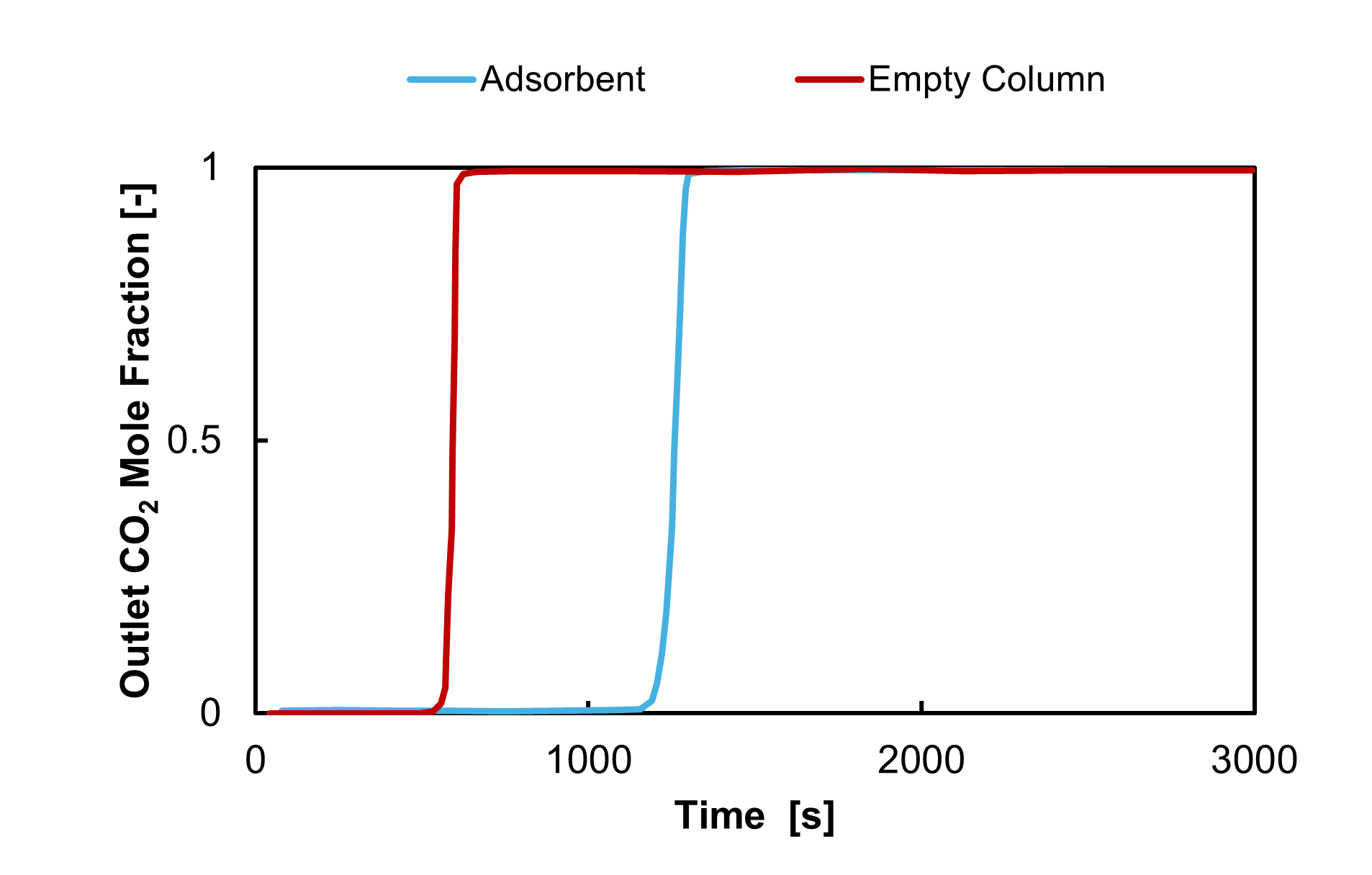Dead volume in breakthrough experiments
2025-08-13
I've previously discussed some of the factors that affect the shape of the breakthrough curve in an adsorption experiment. These include: mass transfer, axial dispersion and effective thermal conductivity. In addition to these factors, the dead volume is a frequently overlooked factor that must be considered.
Dead volume refers to the volume in the breakthrough setup where gas can accumulate. The accumulation is reflected in the breakthrough curve by increasing the breakthrough time. Without subtracting the dead volume, an overestimate of the total adsorbed capacity of the adsorbent may be made.
Dead volume is the sum of the system volume from the outlet of the mass flow controller/meter to the inlet of the sensor. That includes pipework, dead legs, valves, inlet and outlet distribution space, etc. In laboratory-scale experiments, this volume can account for a significant fraction of the total system volume and thus will affect the breakthrough curve dramatically.
One can estimate the dead volume by performing an empty column breakthrough test with a tracer component. Integrating the area above the breakthrough curve can be used to determine the volume. Subtracting the volume of adsorbent added to the column during a test will determine the actual dead volume. One may instead decide to use an inert material (e.g. glass beads) to replace the same volume of adsorbent in the empty column test.

To reduce the impact of the dead volume, one can ensure that the volume of pipework between the controller and sensor is minimised. In constant pressure experiments, so long as the ratio of moles accumulated in the dead volume versus the moles adsorbed is small, the error in the estimation of adsorption capacity will be small. However, in experiments where the pressure varies significantly, the accumulation in the dead volume can be increased.
Dead volume can not only shift the breakthrough curve to the right (increase in residence time), but due to the diffusion and dispersion in pipework, elbows, and tees, the exact experimental setup will affect the shape of the breakthrough curve. In the empty column test, a good set-up would produce a sharp response (indicating limited dispersion), with a short breakthrough time (indicating a small volume). If the dispersion within the system is significant, the kinetic effects of the adsorption test may be "hidden" and make the extraction of parameters more difficult.
One may also want to check the response time of the sensor to ensure the delay is not contributing to an overestimate of the dead volume. Each time the experimental setup changes, the engineer must ensure that the dead volume is recalculated.